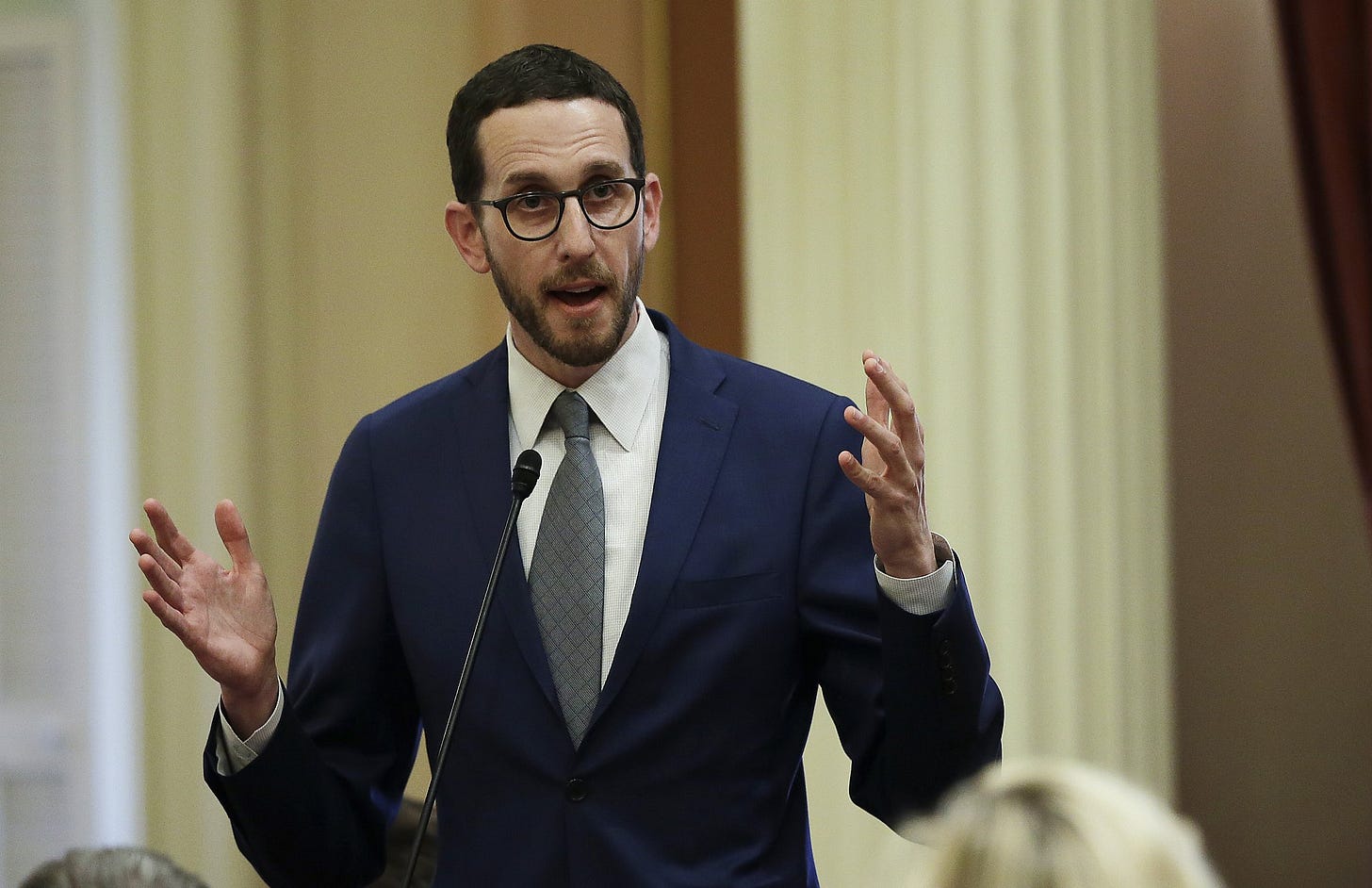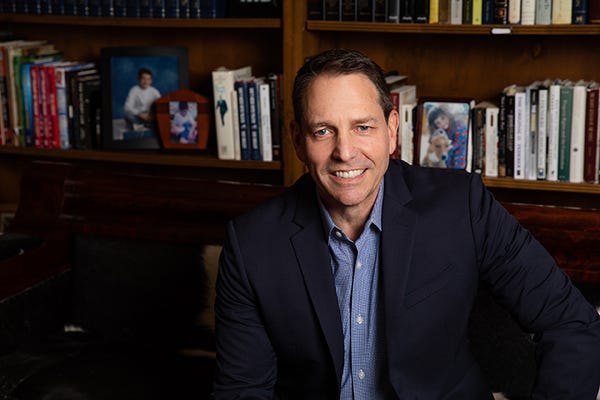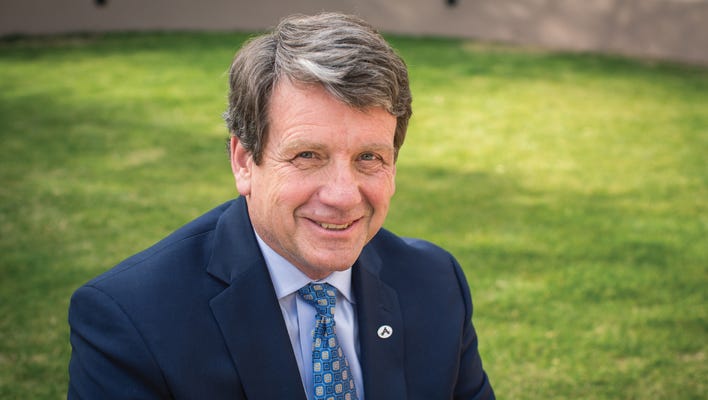WE'RE BACK: Rewriting the Constitution?
What it would mean to call a constitutional convention
When the framers of the Constitution met in a stuffy room in Philadelphia, they knew that the document they were creating would eventually need to be fixed. While they hoped that many of the principles they set forth would stand the test of time, there was no assurance that they would. Lacking a crystal ball with which to see the future, they provided a way to change the new document should it ever be needed. Two ways, in fact.
George Washington wrote to a relative about this, saying that in the future, “People…will have the advantage of experience on their side [and they can] decide with as much propriety on the alterations and amendments which are necessary.”
And here’s the part that some people seem to forget about the founders. While we have practically deified them, Washington himself didn’t view their talents as particularly prodigious. He said, “I do not think we are more inspired, have more wisdom, or possess more virtue, than those who will come after us.” Generations yet to come might know better than us, they knew, but they disagreed about how they might amend the document.
Hamilton argued that states would try to act in their own self interest and so their power should be limited when it came to changing the national constitution. George Mason felt the opposite. He believed that the whole point of the amendment process would be for the states to check the power of the federal government.
Ultimately, Hamilton and Mason couldn’t come to an agreement, so instead, they compromised. And that’s how they came up with Article V, which lays out two ways to change the Constitution, one led by Congress, and one led by the states.
This is what they came up with:
Method One: The Senate and the House of Representatives must pass identical amendments with a two-thirds majority. That amendment is then sent to the states and three-fourths of the states must agree to ratify it.
Method Two: The states request a Constitutional Convention to amend the Constitution. Any amendments they propose require ratification from three-fourths of the states to be added.
We’ve never used the second option — the 27 amendments to the Constitution have only been added using method one.
But now, we are closer than ever before to potentially seeing a Constitutional Convention — an option that could either be very exciting or very dangerous.
Over the last 200+ years, various states have called for an Article V convention. Some of those requests date back to the 18th century, but in July 2022, Texas Representative Jodey Arrington claimed that the threshold of 34 states requesting a convention was met decades ago, and that one should have been called in 1979.
He introduced legislation that would require the Archivist of the United States, who is in charge of certifying and publishing new Constitutional amendments, to add up how many states have formally asked for a convention. If there are 34, Congress would be forced to act and call the convention.
At the time, Arrington said, “The problem is that they haven’t had a ministerial, clerical mechanism for the Archivist to keep a count and report to Congress. I do believe we have crossed that threshold, and it is not Congressional discretion — it is a constitutional mandate — that Congress should pick a date and a place for the convention.”
Arrington reintroduced the bill in March 2023 because the House had a Republican majority. As of today, it has not been brought to the House for a vote. But that could change.
Not all the states who have previously asked for a convention want to have one now. Some are actively trying to rescind their previous requests, worried about what could happen if a Convention of States is called.
California, for example, has asked for a convention seven times in the past, most recently in September 2023, when they wanted to create federal laws on gun control. But now, state Senator Scott Wiener is trying to repeal all seven requests.
He said, “The damage a Constitutional Convention could do to Californians’ basic rights is off the charts. Once it begins, extremists could easily hijack it and drive the Convention to strip protections for women, LGBTQ people, workers, immigrants, or any number of other groups, while undermining democracy and locking in the power of the largest corporations on the planet.”
Oregon, New York, New Jersey, and Illinois have also previously rescinded their calls for a convention. Lawmakers in Vermont, Massachusetts, and Connecticut introduced legislation to remove their applications, though progress on those has stalled in recent years. Are states actually allowed to rescind a request? That is legally untested.
Calls for a convention have grown into a low roar, spurred on by groups on both sides of the aisle. The Democratic-leaning Wolf-PAC campaign says the US government is “no longer accountable to the people” and that they want to “end corruption and ensure free & fair elections” by adding a constitutional amendment that restores “the integrity of our elections, and will protect both state and federal reform.”
Then there is the US Term Limits, a nonpartisan advocacy campaign that wants to do exactly as the name suggests, amend the Constitution to achieve term limits. They say the goal of this would be “citizen legislatures arising from competitive elections, rotation in office and expanded citizen access to the electoral process.”
But the biggest and loudest campaign is the Convention of States, a conservative group that says they want a convention “to bring power back to the states and the people, where it belongs.” The group was founded by political activist Mark Meckler and Michael Farris, the former president and CEO of Alliance Defending Freedom, a Christian legal advocacy group. Led in part by Trump allies, such as the former Republican Rep. Rick Santorum, the group writes that, “Unelected bureaucrats in Washington, D.C. shouldn’t be allowed to make sweeping decisions that impact millions of Americans. But right now, they do.”
The group is funded by the Mercer family, one of the most influential donors of Trump’s 2016 campaign. They also donated to Trump’s re-election in 2020 and in 2022, sent $31 million to the DonorsTrust, a dark money fund that sends money to right-leaning causes on behalf of donors.
The Convention of States group wants amendments that “impose fiscal restraints on the federal government, limit the power and jurisdiction of the federal government, and limit the terms of office for its officials and for members of Congress.”
Other groups, like Common Cause, are actively working against holding a convention because of one major fear: a small group of people would be able to seize power and dominate the convention, railroading the rest of the country with fringe or extremist rhetoric. According to them, “There is no saying what could happen to any of our rights or what could be traded in an exchange between special interests—who will most definitely have their hands in the process. There is no predicting what could happen and far too many open-ended questions for this to be a good idea.”
David Super, a professor at the Georgetown University Law Center, says, “As soon as an Article V convention convened, it could pursue any agenda it chose. It might or might not propose amendments along the lines its proponents urge, but it could also advance amendments on any other topic. Fears of such a ‘runaway convention’ have united people across the political spectrum to work against this dangerous adventure.”
The Convention of States group has already given us a glimpse of what they hope to do, as described by legal scholar Peter Prindiville and former Senator Russell Feingold in their book, The Constitution in Jeopardy. (I also talked to Feingold on my podcast.)
In 2016, the Convention of States Project sponsored a simulated convention. They wanted to see how a real convention would work, and they gathered over 100 state legislators from all 50 states. They created a wish list of proposed amendments that would “radically transform modern government” if it were adopted, according to Feingold and Prindiville. The wish list included things like restricting Congress’s lawmaking authority, restricting federal agencies’ rule-making authority, allowing a vote of 30 state legislatures to invalidate federal laws and regulations, and repealing the income tax.
One of the Convention of States co-founders said of the mock convention, “This is kind of the precursor to the real Super Bowl. It’s sort of a dress rehearsal.”
Prindiville and Feingold wrote in their book that the mock convention “provided a rare public glimpse at the scale and sophistication of a very real effort: a coolheaded long-term strategy to make seismic alterations to our constitutional regime through legitimate, legal means. And like previous slow-burn plays, the effort could prove supremely consequential.”
And one consequential part of the mock convention was that the group gave a single vote to each state, the same way the 1787 Constitutional Convention was run.
Critics worry that this gives states like Wyoming, population 577,000, far greater political power than states like California, population 39.5 million. They call this malapportionment, and in this instance, a vote from Wyoming would be worth 68 times more than a vote from California. Feingold and Prindiville say that the Convention of States group views this malapportionment as a feature, not a bug, allowing them to ram through changes not wanted by the majority of Americans.
In a video of the simulation, Convention of States co-founder Farris said, “If you put enough pressure on state legislatures, you can get stuff done. You don’t need a majority of America, because a majority doesn’t participate … less than 1 percent of the people ever participate. With 1 percent of the American public, that’s three million people, I guarantee you we can get this done.”
The Convention of States is likely closer to their goal now than they were in 2016. Depending on how Congress adds up current calls for a convention (like, do we count requests from 1805?), they could potentially reach the 34-state threshold.
Most Americans think the Constitution needs to be updated — they just disagree on what to update. I’ve argued that we need changes to how we run our elections. But before I could support a Constitutional Convention, the rules would need to be carefully laid out and agreed to, lest, in the words of George Washington, a convention becomes an engine by which “cunning, ambitious, and unprincipled men will be enabled to subvert the power of the people and usurp for themselves the reins of government.”'
I’d love to hear what you think: is it time for a Convention of States? Tell me in the comments!










It’s early in the morning; I’ve only just now finished my first cup of coffee. While much remains to be considered, my immediate thought (in absence of said carefully laid-out rules package) is, “What in the fresh hell….😅🫣🤯.”
First, there should be a time limit on any state's request for a convention. Once that limit has passed then the request is "expired". This is an unworkable loop, as it would take an Amendment to put it in place, but some amount of reasonableness is needed.
Second, for such a call to be a free-for-all seems ridiculous to me. Once called, the convention would need to deal with only those measures put forth by states in their request.
At this point in time, in the end, I'm against it just because MAGA has a coalition Progressives/Liberals can't touch and so would completely control things. The Right already wants to quit the game and take their toys home if they don't get their way.
As for what I'd love to see changed: terms limits enacted, institute ranked choice voting/eliminating the Electoral College, election reform to make them federally funded/eliminate all possibility of dark money, do away with the inauguration fund, and publish the ERA, which should've been done ages ago (that we don't interpret it as being included in the original wording is beyond me anyway - man means mankind, which includes everyone).